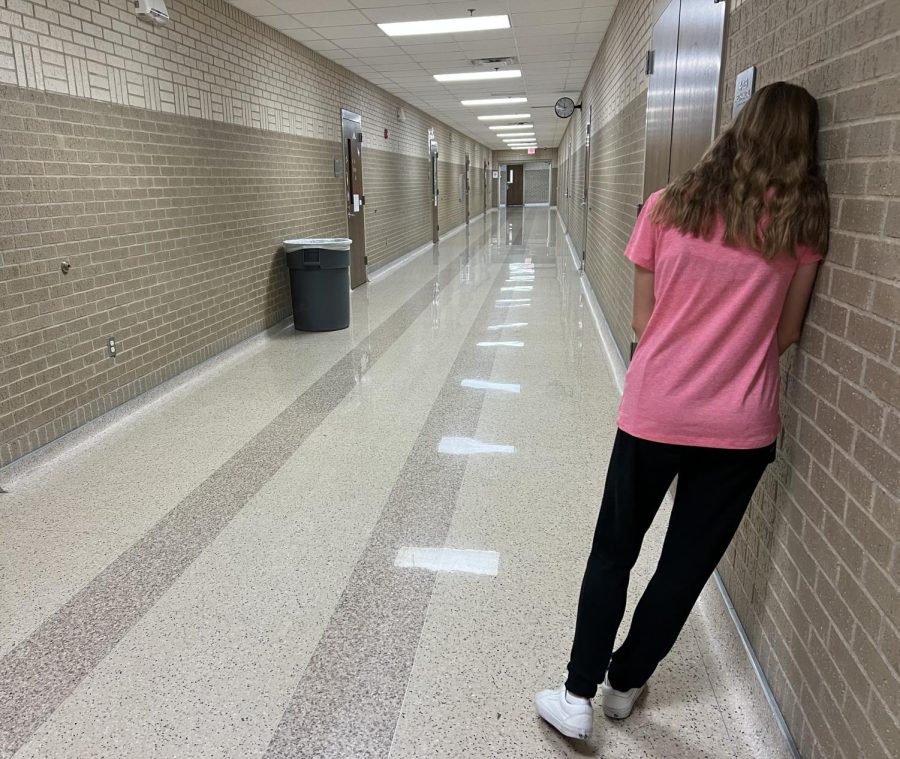Bullying: A New Technological Makeover
Bullying, much like technology, has advanced through the years forcing students to deal with yet another challenge.
Whether it’s in elementary school or even college, bullying is an act that transcends age and time. But as generations have passed, it appears that bullying as many know it may be going through a major change.
When most people think of bullying, their mind often goes to the classic “give me your lunch money” rhetoric. However, in today’s day and age, a situation like that would probably not occur. This is thanks to technology, which has completely changed the way people interact with each other. With new advances in this field, traditional bullying has been replaced with cyberbullying across social media platforms. This makes it harder for victims to escape bullying as it follows them home and everywhere they go. Junior, Alexandra Imoislli, thinks that bullying does not exist in the traditional way anymore.
“Going off of Disney, bullying back then was like ‘Hey duckface’ or something stupid like that. It was physical, like being thrown into lockers or being pushed to the floor. But bullying now is through Instagram and other apps like that. I would say traditional bullying is worse because it’s not as easy to end and is always in your face. Whereas with cyber bullying you can take a break and go back. Either way, they’re both horrible,” stated Imoisilli.
Due to the lack of advanced technology, available back then it was much harder to bully people online. These days, all it takes is one click of a button and a plethora of hate is spread like wildfire. Counselor Kim Wilson says that bullies have had to evolve their methods.
“Back in the 90s, we didn’t have cell phones so we had to use landlines. You knew that your parents could pick up the phone and listen to the conversation and hear if you were saying mean or cruel things, which is why people said what they had to say face to face. I think in this day and time, it’s so much easier for people to hide behind their cell phones because you don’t have to see their expressions. You can type whatever you want to type in. You can hide behind technology,” said Wilson.
Oftentimes victims of cyberbullying are told to turn off their phones or delete the app. However, by doing so, they forfeit their opportunity to connect with loved ones and friends, as well as being out of the loop of trends that could pop up while they are gone. At the end of the day, they must ask themselves if staying on social media is worth sacrificing their mental health. On the other hand, the cyberbullies themselves often face no repercussions for essentially driving their victims offline. Despite this circumstance, getting away from the negativity online may be beneficial. Junior, Kyle Okoth, believes that victims disconnecting themselves from social media is the answer.
“It’s really easy if you think about it, but actually doing it is something different. Obviously, if people are saying bad things about you online, you want to see what is being said so that way you can defend yourself, but if all it’s doing is tearing you down, then it’s not worth it to stay on there because the stuff people post can be very hurtful,” said Okoth.
Students are hesitant to report such actions due to numerous factors such as fear, anxiety, and peer pressure. However, it is also sometimes caused by the lack of support from teachers and other “trusted adults.” Anti-bullying posters and assemblies can only do so much, and in a number of cases, adults often fall short. Imoisilli says that the staff at her school practically did nothing.
“When I was being bullied the adults at my school didn’t really do anything. They would just be like ‘You guys are kids so your words don’t mean anything’ or try to convince me that the other kids were just playing around. They could’ve done more to help the situation like talking to the students and giving them actual consequences,” said Imoisillii.
Many schools provide their students with an abundance of resources that can help them if they are being bullied, as well as ways to report bullying anonymously. However, many students do not take advantage of these tools for various factors. Wilson is no stranger to this unfortunate scenario.
“They wonder if they will be believed, or they’re afraid that they’re going to be told to quit being so soft about it, or ‘you’re tougher than that.’ Some people won’t take it seriously and then it could be an embarrassment because of the type of things that are being said or done to them,” said Wilson.
Resources may also be left unused because people think they are necessary due to the way society treats bullying now. It’s all too common to hear people say they are being bullied as a joke or dismiss concerning behaviors that could indicate real issues among individuals. Gen Z, which consists of people born between 1997-2010, is known for having a dark sense of humor and using that humor to cope with dark situations or minor inconveniences. Imoisilli believes this is not a good development.
“People say they are going to kill themselves all the time. It has got to the point where if one of my friends said that I wouldn’t even take them seriously until they actually started showing signs. It’s kind of sad to think about it, but that’s just the way things are now,” said Imoisilli.
Although many alarming phrases or actions are not seen as concerning amongst this generation, there has been increased media attention surrounding bullying, directed toward this demographic. With shows like “13 Reasons Why” and songs such as “1-800” by Logic, bullying and suicide awareness have increased. However, the effect they are trying to have, getting teens to reach out for help may be falling short. Wilson believes that these resources can only do so much.
“If students are willing to use them, I think it can help, but I don’t know that it’s decreased bullying. I think social media and the access that students have to technology versus back in the day is probably one of the reasons that there’s more exposure to these suicide/bullying hotlines. However, they have to be willing to use those resources and put them to use,” said Wilson.
Even with an abundance of resources, it is very unlikely that a single solution will put bullying to a halt. It depends on the person, the type of bullying being done, and the situation itself. AP Psychology Teacher, Thomas White, believes that change starts with an individual and society as a whole.
“It’s an ignorance thing. It’s a fear of change and difference and I think that we play into that too much in today’s society. I think if we were more open-minded and did not live in our echo chambers of social media, we would not have the stigmatism of different points of view. I think we have to address it within our own friend groups and call out people instead of allowing it to continue. That’s really the only way we can see a reduction in bullying. Bullying will never go away. It’s human nature,” said White.


